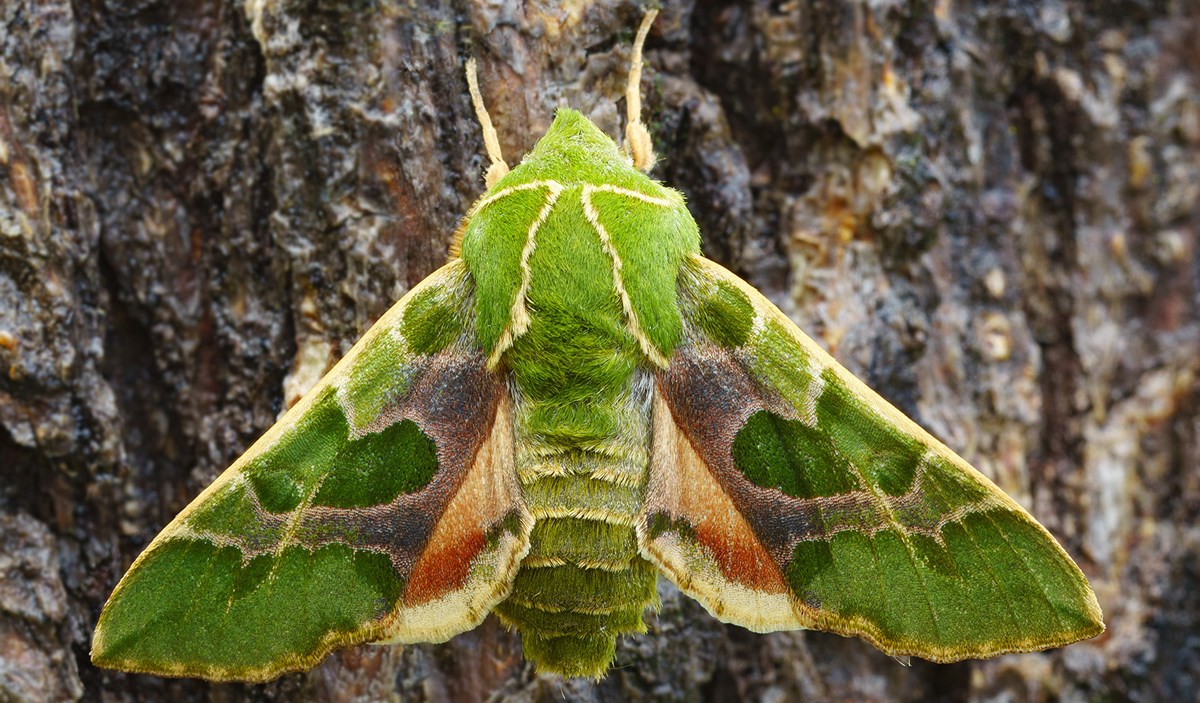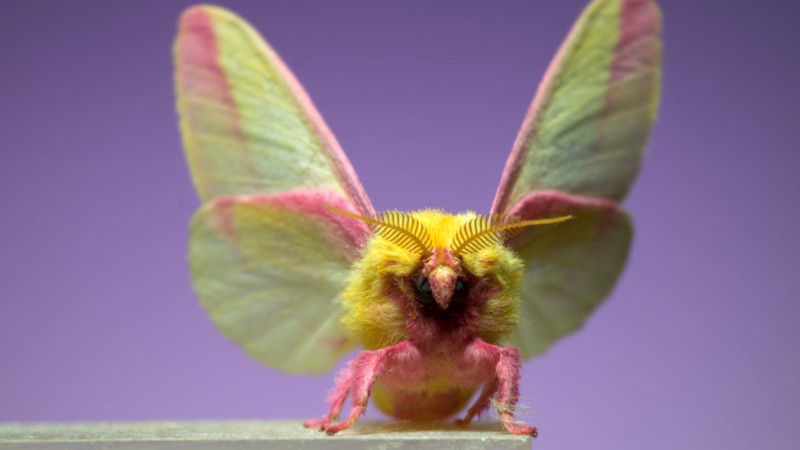Is there any such thing as a moth that bite?

Moths do not have the ability to bite very much the same that humans can. However, by chewing holes in clothes along with other materials, they may cause harm to the owner's belongings. Keeping them in boxes or bags that are hermetically sealed is a good way to prevent this from happening.
Although adult moths do not bite, the mouthparts of their larval (caterpillar) stage have the ability to cause painful stings. Due to this, it is essential to utilize a repellent so that they will stay far from home.
They do not have any mouths of their own.
Moths, like the ones you may see flying over your home, don't have mouths of their own. The antennae of the insects are used for a range of tasks, including feeding on leaves and fruits, sucking nectar from flowers, and finding partners. There is also an organ that looks like a long straw that they utilize to swallow liquids and maintain the proper balance of these bodily fluids. moth bite cannot eat because they mature because they lose their jaws.
Adult moths cannot bite humans for several reasons, the principal one being that they usually do not possess mouths. However, the larvae of some species of moths are mostly in charge of the harm that they do to clothing and other forms of fabric. The larvae of some species of moths eat wool along with other forms of clothes, which might result in holes, stains, along with other sorts of damage. The larvae of other kinds of moths feed on many different houseplants and food stored in pantries, leaving behind holes and discoloration in the affected materials.

Moths are great mimics, and through time, they have developed a wide array of defense mechanisms to defend against potential predators. The Polyphemus moth, for instance, has pronounced eye markings that give it the looks of a hornet. The body of the wood nymph, an additional species of moth, resembles the droppings of a bird. For this reason, the moth is better in a position to escape being consumed by predators that are attracted to the smell of feces.
It's uncommon for moths to sting people, although certain species can handle doing so. When touched, the spine-like hairs of the moths will cling in to the skin and then to push out a chemical that will create a severe sting. These moths are found in tropical and subtropical regions. In the vast majority of instances, these stings do not pose a threat to human health; but, a lot of people could have an allergic response that manifests as red regions and lumps that are similar in appearance to hives. The medical term for this ailment is lepidopterism.
They don't cause any pain.
Since moths do not possess any mouthparts which are with the capacity of biting into anything, it is impossible for them to bite people. However, they're capable of causing injury to your clothes in addition to other issues around your home. Having an effective moth repellent can be your best bet for keeping moths away.
Moths in their stage as caterpillars are venomous and may bite, while adults do not. This takes place as a normal aspect of their growth as they chew through various things, including fabric and natural materials. moth bite which are produced could be quite damaging to both your clothes as well as your linens.
Spines on the bodies of moth caterpillars serve the objective of protecting them from being eaten by other animals. These spines have the potential to obtain embedded in the skin under certain circumstances. They are also with the capacity of causing an allergic response known as lepidopterism, which is comparable to hives and could sting for a couple minutes at a time.
can moths sting of moth caterpillars, fortunately, do not have spines that are capable of stinging people; nevertheless, there are many notable exceptions. For instance, the larva of the flannel moth contains spiky hairs which are with the capacity of readily being embedded in human skin. This may create a painful, itchy, red section of lumps that seem much like hives and could need treatment from a medical professional.
Other uncommon forms of moth caterpillars have spines that are covered with poison. They are often linked to the genus Calyptra, plus they have the potential to provoke a reply in human skin that's seen as a itching, redness, and blistering. It is also possible for it to cause a more serious response in the eye, one that may be deadly if the individual is not treated with antivenom as quickly as possible.
They do not constitute a danger to one's health.
Nearly all adult moth species usually do not possess the mouthparts necessary to bite, hence there's little danger to human health posed by these insects. On the other hand, several kinds of moth caterpillars have sharp hairs that look like spines and are able to deliver an awful sting to humans. These stings may cause itching, discomfort that lasts for a few minutes, and red patches that appear to be hives on the victim's skin. These caterpillars are very uncommon and fortunately usually do not give a serious threat to human health.

Alternatively, the larvae of moths could be rather hazardous. The larvae of the Clothes Moth, the normal Miller Moth, and the Pantry Moth feed on dry foods and textiles. For moth bite who have an infestation of these bugs in your own home, your clothing could be ruined, and your food may go bad. These moths' larvae can handle eating through woodwork and other materials found in your home.
Moths don't have mouthparts, but they can handle contaminating food, which is particularly dangerous for small kids. Additionally it is known that germs and parasites could be carried by these moths. They are also able to contaminate the containers you use to store food along with other objects in your kitchen.
In many instances, moths usually do not provide any type of danger to human health unless you can find excessive numbers of them. Although most individuals won't be bothered by these insects, people that have sensitive skin or eyes might experience some discomfort as a result of their presence. In addition, they will have the potential to aggravate symptoms in those that already suffer from dermatitis or respiratory allergies. In addition, the current presence of moths might recreate allergy symptoms in someone who is sensitive to dust mites. Simply because moths feed on dust mites.
They are a source of frustration.
Moths are a nuisance because the natural fibers of wool, silk, and other natural fibers are susceptible to having holes chewed in them by moths. These holes have the potential to ruin pricey bedding and apparel. In addition to this, they are a nuisance because of the fact that they can munch their way through carpets along with other materials. Moths, however, usually do not pose any threat to human health. They're harmless , nor bite or sting. However, by puncturing the skin making use of their sharp hairs, they may cause it to become red and irritated. Itching and a rash that looks like hives may be caused by these hairs.
Moths can easily fly thanks to the wings they will have. They can also utilize the scent receptors in their antennae to detect the presence of food. Some species of moths possess mouthparts known as proboscises, which enable them to penetrate fruit and other plants. The calyptra moth, sometimes known as the vampire moth, has a proboscis that's more specifically tailored to extract blood from fruits along with other plants than other moths.
The majority of moths have a fuzzy, velvety texture and reside in dark locations like closets and cabinets. You may find them there. They're active at night and perform their daily activities when most others are asleep. If they congregate in great numbers inside of dwellings, they may supply the impression they are a nuisance.
The widespread belief that moths may bite is due to the truth that these insects have the effect of creating holes in people's clothing. Alternatively, this behavior is caused by the larvae. Adult moths only consume nectar, and they do not gnaw their way through fabric at all. If they congregate in huge numbers to breed indoors, it really is more of an annoyance than anything else. The butterfly population skyrockets in the spring and autumn, when it migrates to higher altitudes searching for food before hibernating for the wintertime.
